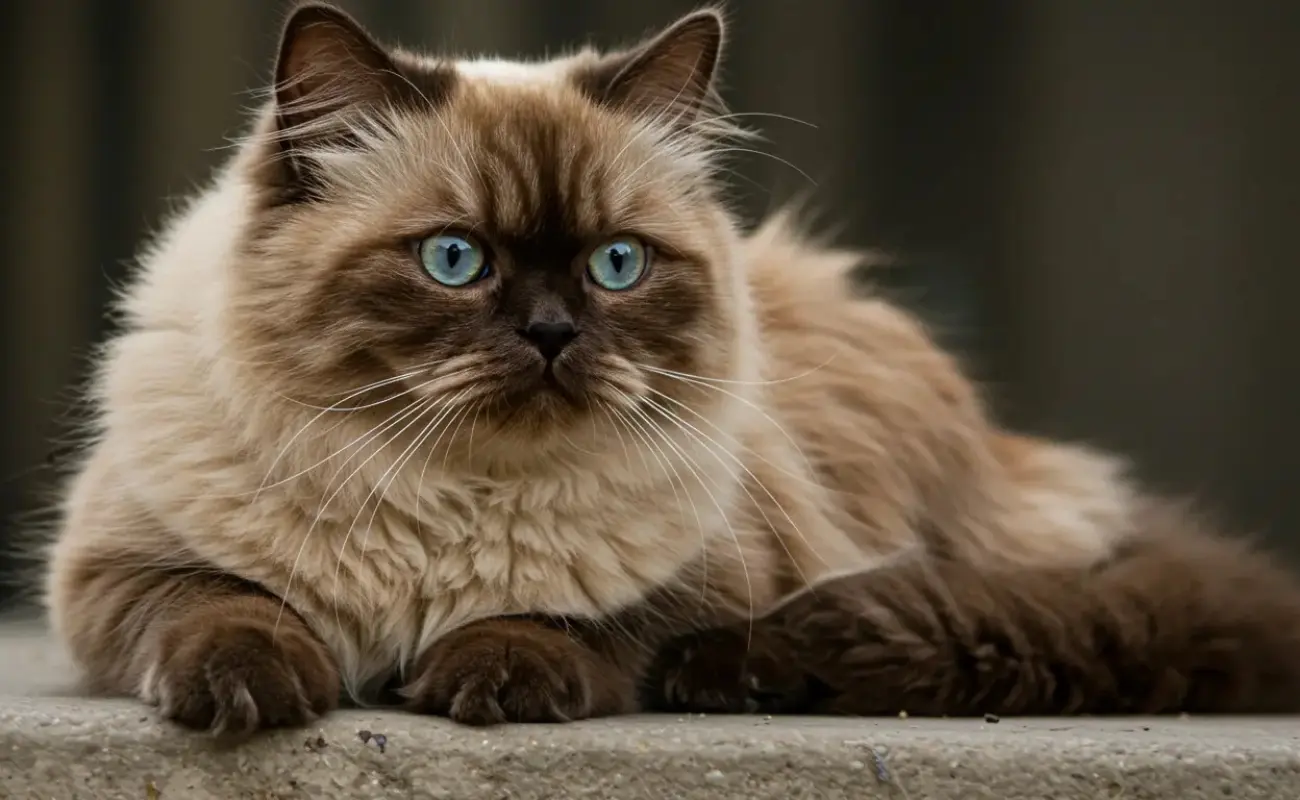Himalayan cats are beloved for their stunning appearance, calm demeanor, and affectionate nature. However, one question often arises among potential owners: Are Himalayan cats hypoallergenic? This article delves deep into this query, exploring whether these beautiful cats can coexist with individuals prone to allergies. Let’s uncover the truth about Himalayan cats and their potential to trigger allergic reactions.
Overview
What Does “Hypoallergenic” Mean?
The term “hypoallergenic” refers to animals or products that are less likely to trigger allergic reactions. In the context of cats, hypoallergenic breeds produce fewer allergens, such as dander or the Fel d1 protein found in their saliva and skin. However, no cat is entirely allergen-free.
Are Himalayan Cats Hypoallergenic?
Himalayan cats are not considered hypoallergenic. They are heavy shedders and produce moderate amounts of allergens, including dander and the Fel d1 protein. These factors make them a poor choice for allergy sufferers. While their majestic coat is a visual delight, it requires regular maintenance to control shedding and allergen spread.
Shedding and Coat Characteristics
Himalayan Cats’ Fur
- Long, Dense Coat: Himalayan cats have a luxurious, thick coat that sheds heavily year-round. Their fur can trap dander, dust, and pollen, which exacerbate allergy symptoms.
- Continuous Shedding: Unlike short-haired breeds, Himalayans require frequent grooming to manage shedding and reduce allergens.
Shedding Impact on Allergies
- Shedding releases dander and allergens into the air, increasing the likelihood of respiratory issues for sensitive individuals.
- Pollen and dust trapped in the fur can cause secondary allergic reactions.
Key Scores:
- Shedding Intensity: 6/10
- Hair Length Contribution to Allergies: 8/10

Common Questions About Himalayan Cats and Allergies
What Causes Cat Allergies?
Cat allergies stem primarily from exposure to the Fel d1 protein found in:
- Saliva: Cats groom themselves frequently, spreading this protein onto their fur.
- Skin (Dander): Dead skin cells shed along with fur contain allergens.
- Urine: Traces of Fel d1 can also be present in litter boxes.
Are Male or Female Himalayan Cats Less Allergenic?
- Male Cats: Tend to produce more Fel d1 protein than females.
- Kittens: Generally produce fewer allergens than adult cats.
Tips for Managing Allergies While Living with a Himalayan Cat
Grooming and Maintenance
Regular grooming can significantly reduce allergens:
- Daily Brushing: Prevents excessive shedding and removes loose fur.
- Monthly Baths: Use hypoallergenic, cat-safe shampoos to minimize dander buildup.
- Professional Grooming: Consider occasional visits to a groomer for thorough coat care.
Household Adjustments
- HEPA Filters: Install air purifiers and vacuum cleaners with HEPA filters to trap allergens.
- Fur-Free Zones: Restrict the cat’s access to bedrooms or upholstered furniture.
- Washable Covers: Use washable slipcovers on furniture and launder them regularly.
- Hard Floors Over Carpets: Opt for hard flooring, which is easier to clean and less likely to trap fur.
Personal Care Tips
- Hand Hygiene: Wash hands after petting or handling your cat.
- Clothing Care: Use lint rollers to remove fur from clothing.
- Allergy Medications: Keep antihistamines or other prescribed medications on hand for flare-ups.
Challenges and Solutions Related to Allergies and Himalayan Cats
Challenges
- Persistent Shedding: Managing the constant shedding of long-haired cats.
- Allergen Spread: Fel d1 protein becoming airborne during grooming or shedding.
- Skin Irritation: Allergens can cause rashes or dermatitis upon contact.
Solutions
- Consistent Cleaning Routine: Daily vacuuming and dusting reduce allergen buildup.
- Cat Training: Train your Himalayan to avoid licking humans, which can spread allergens.
- Frequent Vet Visits: Ensure your cat’s skin and coat are healthy to minimize dander.
Benefits of Owning a Himalayan Cat
Despite their allergenic potential, Himalayan cats offer numerous benefits:
Affectionate Companions
- Himalayans are renowned for their affectionate and gentle temperament.
- They enjoy spending time with their owners and are often lap cats.
Low Activity Levels
- Their calm demeanor makes them suitable for quiet households.
- They adapt well to apartment living.
Stunning Appearance
- Their luxurious coat and striking blue eyes make them one of the most visually captivating cat breeds.
Expert Opinions and Research
What Experts Say
- Veterinarians: Most agree that Himalayan cats are not hypoallergenic and require extensive grooming to manage allergens.
- Allergy Specialists: Recommend thorough environmental adjustments for individuals determined to own a Himalayan cat despite allergies.
Research Insights
- Studies show that long-haired cats, including Himalayans, release significant amounts of dander due to their thick coat.
- Male cats consistently produce more Fel d1 protein, making them more allergenic than females or kittens.
More Insights on Allergens and Cats
Why Do Himalayans Shed More Than Some Breeds?
- Himalayans inherit their long, luxurious coats from their Persian ancestors. This double-layered coat is designed for colder climates, leading to more shedding compared to short-haired or single-coated breeds.
- Regular shedding helps their fur maintain its healthy growth cycle, but it requires owners to stay vigilant about cleaning and grooming.
Comparisons with Hypoallergenic Breeds
- Siberian Cats: Known for producing lower levels of Fel d1 protein.
- Balinese Cats: Sometimes called “the long-haired Siamese,” Balinese cats are another popular hypoallergenic choice.
- Devon Rex & Cornish Rex Cats: These breeds have short, curly fur and shed less, reducing allergen spread.
Can You Build Immunity to Cat Allergies?
Some individuals develop a tolerance to cat allergens over time, especially with consistent exposure. However, this varies widely and should not be relied upon as a solution. Allergy shots, also known as immunotherapy, can help in some cases by gradually desensitizing the immune system to cat allergens.
Frequently Asked Questions (FAQs)
Can Himalayan Cats Be Hypoallergenic?
No, Himalayan cats are not hypoallergenic. They produce moderate levels of allergens and are heavy shedders.
How Can I Reduce Allergy Symptoms Around My Cat?
- Regular grooming and household cleaning can help.
- Use air purifiers and limit the cat’s access to sensitive areas.
Are There Any Hypoallergenic Cat Breeds?
While no breed is completely hypoallergenic, Siberians, Balinese, and Russian Blues are often considered better choices for allergy sufferers.
Can Medications Help with Cat Allergies?
Yes, antihistamines, decongestants, and allergy shots may alleviate symptoms. Consult an allergist for personalized advice.
What Is Fel d1 Protein?
Fel d1 is a protein primarily produced in a cat’s saliva, skin, and sebaceous glands. It is the main allergen responsible for triggering reactions in humans.
Conclusion
Himalayan cats are stunning, affectionate companions but are not hypoallergenic. Their thick, long fur and moderate allergen production make them a challenging choice for allergy sufferers. However, with diligent grooming, household adjustments, and proper care, it is possible to manage allergies while enjoying the company of a Himalayan cat.
Are you a proud Himalayan cat owner or considering adopting one? Share your experiences and tips in the comments below! For more information about cat care and allergies, explore our related articles.





